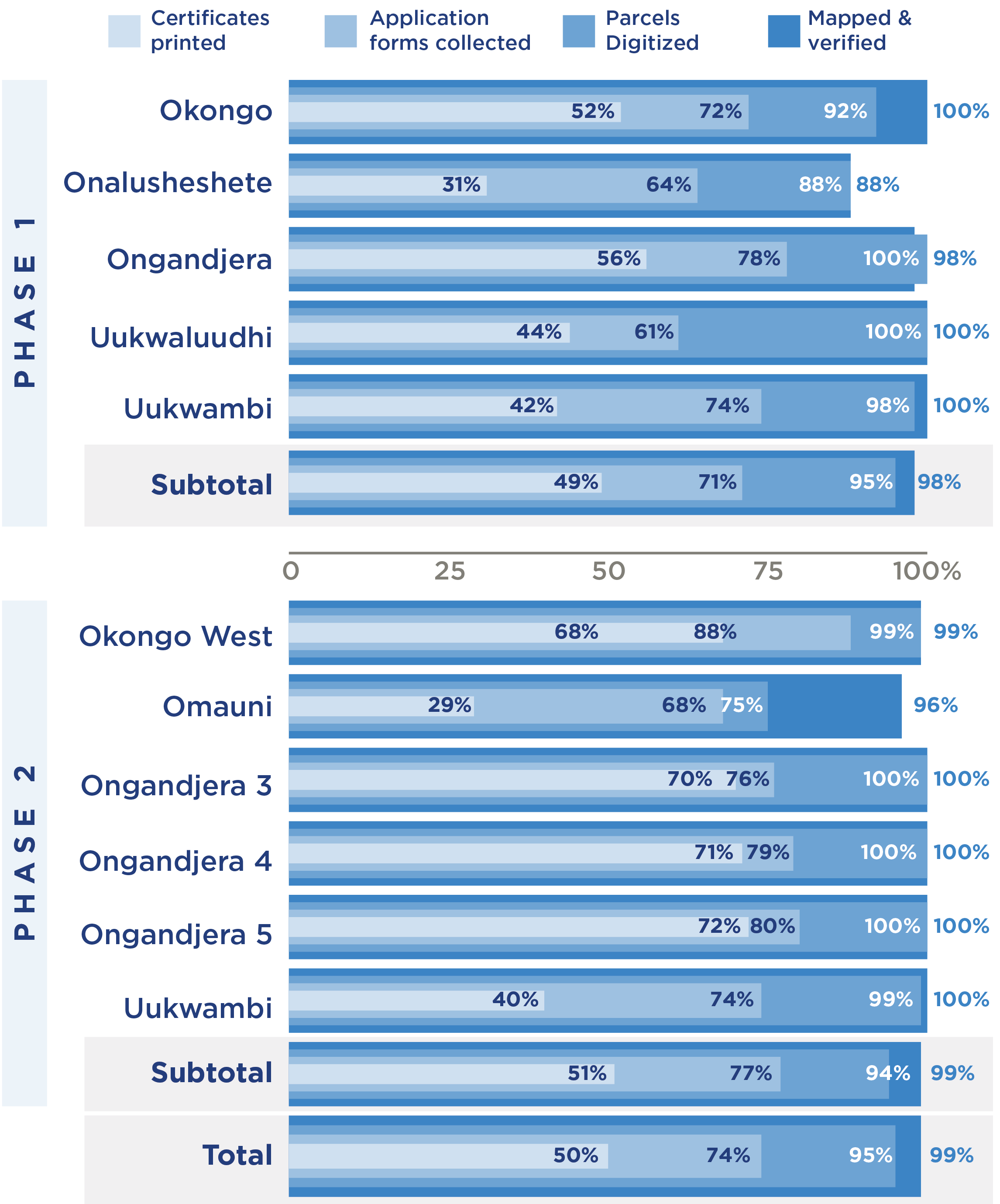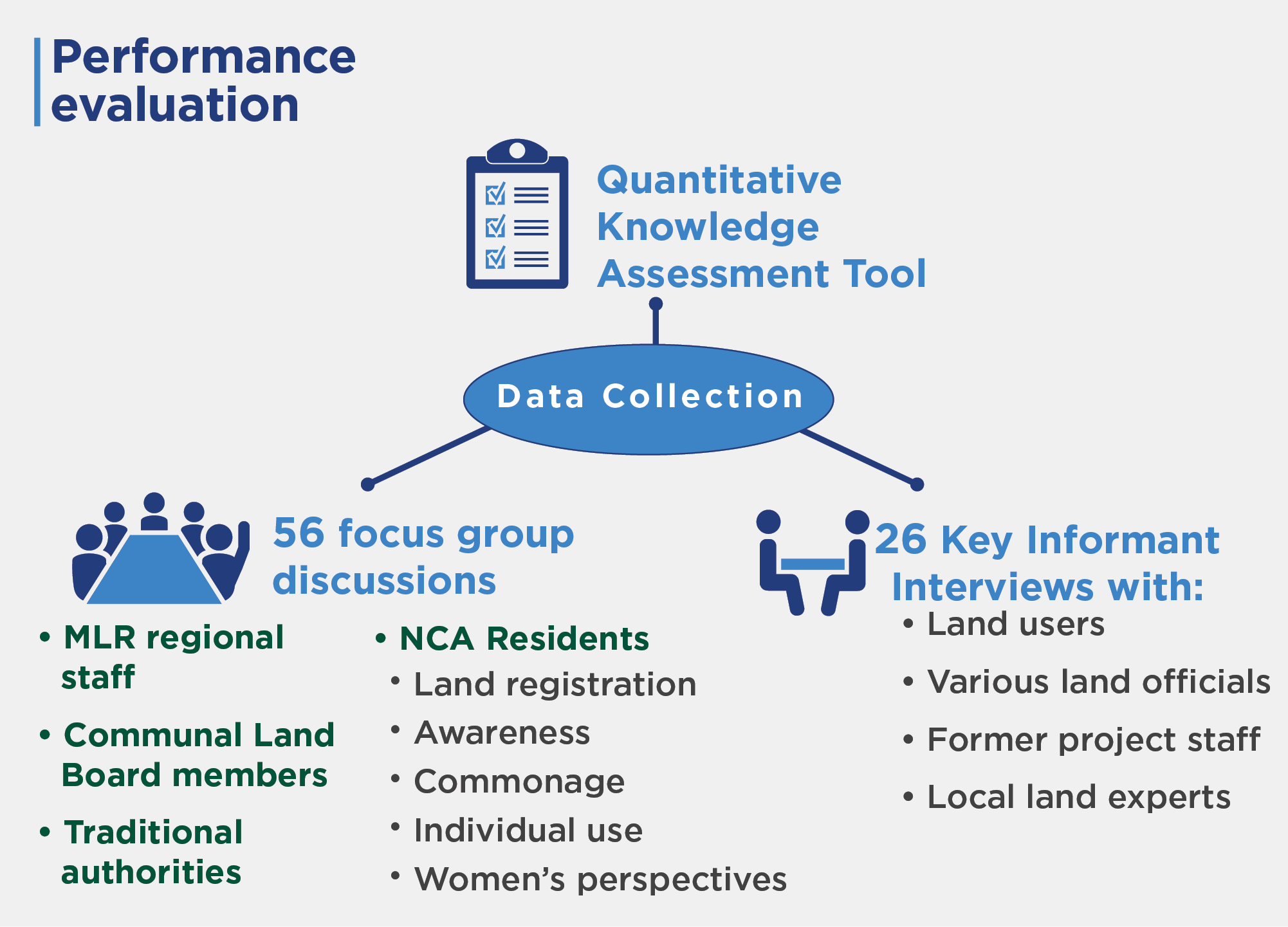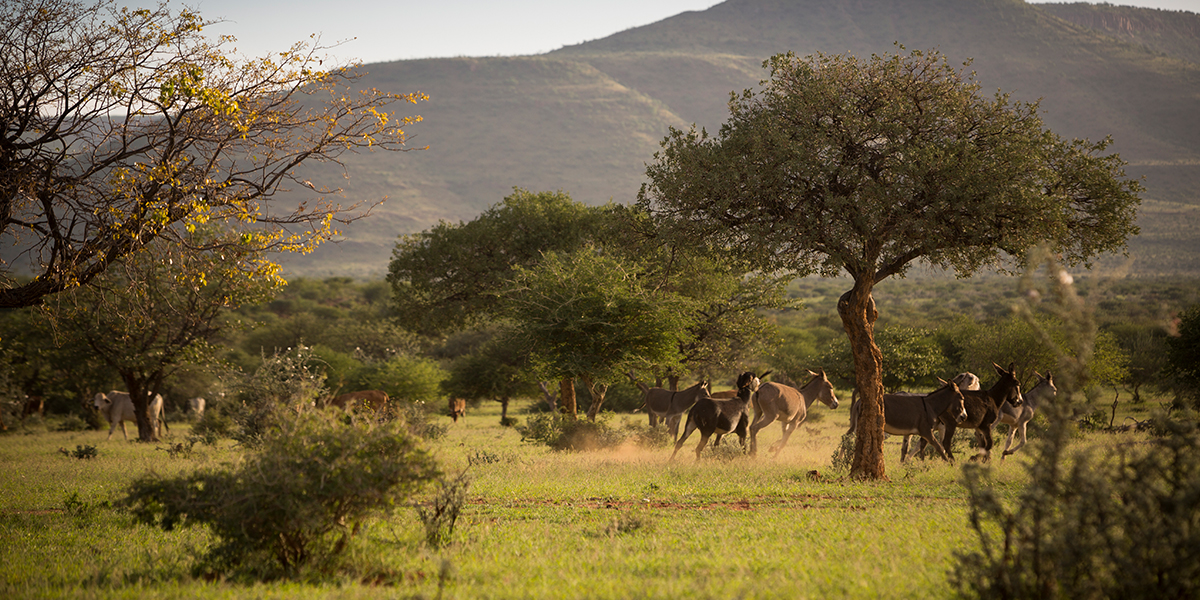Program Overview
MCC’s $257 million Namibia Compact (2009-2014) funded the $8.5 million Communal Land Support (CLS) Sub-Activity to help implement the Communal Land Reform Act. The sub-activity included outreach to communities, capacity building for land officials, the verification and registration of land rights, and revised relevant policies and procedures. These efforts theory to increase citizens’ awareness of land rights and tenure security as well as land administration system efficiency to ultimately improve land use, livestock quality and other investments.Key Findings
Knowledge and Awareness of Land Rights
- Nearly all focus groups could collectively demonstrate a solid understanding of the land registration process, though some respondents expressed concerns about their understanding of land issues, particularly communal grazing rights.
Perceptions of Tenure Security
- Most respondents felt that CLS mapping and registration improved the security of their individual land rights, particularly for women.
- Residents did not feel more secure in their access to communal land for cattle grazing.
Land Registration
- Approximately one-half of the registered land parcel certificates were not delivered by the end of the compact.
- Despite working on policy reform and piloting applications for group land rights in five areas, the sub-activity did not succeed in registering any group land rights; nor did it succeed in registering joint land rights (for husbands and wives together).
Land Use, Livestock and Investment
- Persistent insecurity in rights over communal grazing areas is expected to undermine opportunities for improved land use and livestock outcomes.
Evaluation Questions
This final performance evaluation was designed to answer the following questions.- 1 How has the CLS sub-activity contributed to increasing knowledge and awareness about land rights, laws and procedures under the Communal Land Reform Act?
- 2 How and to what extent has CLS helped improve perceptions related to tenure security, including for women and other vulnerable groups?
- 3 To what extent has CLS had broader impacts on the approach to land registration in Namibia?
- 4 To what extent has CLS contributed to improved economic outcomes (land use, livestock and investment)?
Detailed Findings
Knowledge and Awareness of Land Rights

Namibian homestead
A quantitative knowledge assessment administered to land officials showed that understanding was strong on some issues, but weak on others. Nearly all respondents understood that the duration of customary land rights is not limited and the Traditional Authority has the responsibility to give grazing rights. However, only one respondent understood that parcels larger than 50 hectares must be registered as leaseholds. While the training was viewed positively, officials expressed mixed confidence in their understanding of the Communal Land Reform Act and their ability to carry out its functions, thus they requested additional training.
Perceptions of Tenure Security
In most cases, respondents did not express any concerns about individual tenure security. In 9 of 12 focus groups with Northern Communal Area residents who were asked about the issue, respondents did not indicate any fears or perceived threats to their rights. In the focus groups where concerns were raised, the main worries related to government expropriation and mistrust of the village headperson. Additionally, most respondents recognized the value of land certificates and believed these certificates contributed to increased tenure security, particularly for women. In 10 of 12 Northern Communal Area resident focus groups that asked about registration, respondents indicated that CLS mapping and registration improved their tenure security. Respondents pointed to certification increasing their perception that the land was indeed theirs and clarified boundaries. Certification was seen as especially beneficial for women, who face disadvantages under the traditional system. Mixed gender and female-only land user focus group respondents in the Northern Communal Areas noted that certification improved women’s bargaining power and control over household decision-making. They also noted the CLS communication and outreach campaign played an important role in expanding awareness of widows’ rights and protecting widows’ land from their husbands’ relatives’ claims. Community members perceived this as an improvement for women, even though joint certificates were not issued at the time of the evaluation.Land Registration

Land registration statistics from CLS Phases 1 and 2
While most focus group participants reported their land was mapped, less than one-half reported having a certificate. Respondents highlighted both overall delays in certificates being issued and specific circumstances that prevented certificates from being issued for certain parcels. For example, some participants acknowledged they were away from their homes during the mapping process, arrived in the village after mapping occurred, or their land did not meet the requirements for mapping.
Despite substantial progress in advancing discussions about group land rights, CLS did not succeed in registering any group rights. The Communal Land Reform Act allowed for customary land rights and larger-scale leaseholds to be registered in the name of groups rather than individuals, but there were neither regulations nor systems in place that would allow groups to register rights before the compact began. CLS sought to establish a process for registering group rights and piloted this process in a few areas. Many individuals interviewed noted how CLS made progress toward registering group rights, but felt more work was needed on the surrounding systems and politics to fully institute the registration of group rights.
Land Use, Livestock and Investment
Although this initial performance evaluation did not directly measure medium- and long-term outcomes, such as land use, livestock quality and other investment, the findings provide an opportunity to revisit the CLS program logic and assess the extent to which the originally anticipated outcomes are likely to be realized. For example, a key assumption in the CLS logic was that insecure land rights constrained investment. However, the evaluation data suggest that tenure insecurity did not significantly constrain investment prior to CLS. Another key assumption was that securing rights to communal areas for cattle grazing would contribute to improved land use and livestock outcomes. However, the evaluation found that the availability of communal land to graze cattle is decreasing and tenure insecurity persists. Ultimately, the findings from this evaluation cast doubt about whether increased investment and improved land use and livestock outcomes will materialize without further intervention.MCC Learning
- Structure project management to capitalize on synergies between related interventions.
- MCC needs to ensure evaluations assess the linkage between outputs as well as short-term and long-term outcomes. The CLS independent evaluation could have benefited from a greater focus on the post-compact status of outputs, such as the delivery of land certificates, and their linkage to targeted outcomes.
- The most sensitive issues are usually the most difficult politically and require strategic leverage. Residents noted a number of land-related problems that CLS neither addressed nor resolved, mostly due to a lack of political will on the part of the Government of Namibia. MCC should require that policy and institutional reforms are considered necessary per the program logic before implementing the components the partner country prioritizes.
Evaluation Methods

The original evaluation design proposed a follow-on performance evaluation that would have focused on economic outcomes and their sustainability, which needed more time to accrue. The evaluator recommended establishing the following conditions before further pursuing the follow-on evaluation: (1) issuing all certificates for land registered under CLS and (2) approving group rights. MCC decided not to pursue the follow-on evaluation because those conditions were not met.
2021-002-2652


